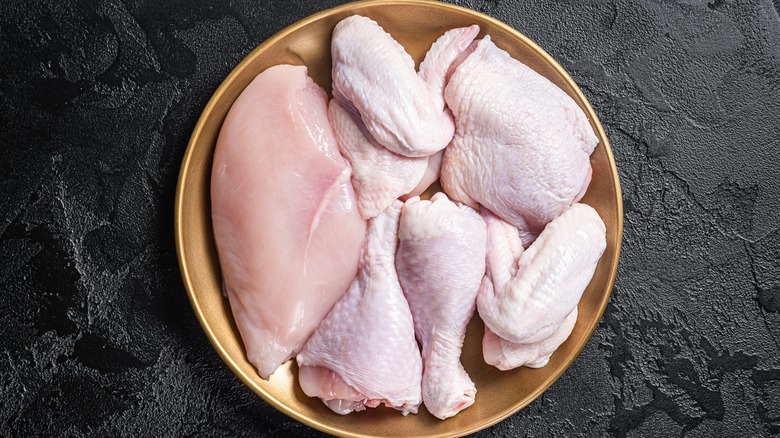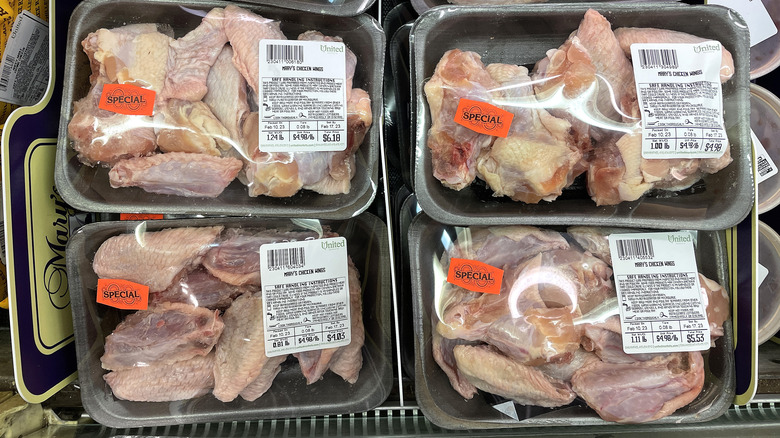Why It's So Hard To Find Chicken Breasts Right Now
First, it was the insanely high egg prices. Now, stores are facing a low inventory of bone-in, skin-on chicken breasts. It may seem shoppers can never catch a break at the grocery store, but unlike other food crises, the scarcity of this type of chicken breast isn't the result of avian influenza or any other bird illness. It has nothing to do with a shortage of farm chickens. According to The Washington Post, the American consumer is to blame, thanks to the good old law of supply and demand.
Bone-in, skin-on chicken breasts barely pepper grocery store shelves — if they're there at all — compared to previous years. Instead, shoppers are buying more of the opposite type of chicken. Diane Souder, Perdue Farms' Senior Director of corporate communications and brand public relations, explained the shift. "The most popular product in the fresh chicken category is boneless skinless chicken breast, which is why you see so much more of this form than bone-in offerings," said Souder. So, why the shortage? Souder added that Perdue responds to market demands, so consumers dictate what options are available in stores — and which are less heavily stocked. As with many other food inventory shifts, this change could impact overall pricing and even the fast food industry.
Boneless chicken prices may decrease and bone-in prices may increase
According to Federal Reserve Economic Data (FRED), the average cost for boneless chicken breast in the United States was $4.41 in April 2023. Although this price is lower than the record-high price of $4.75 per pound in September 2022, it's still significantly higher than before 2022, when prices had hovered between $3 and $4 a pound since 2006. In 2022, boneless chicken breast prices steadily climbed before hitting the September 2022 peak, after which they started dropping again.
As stores are stocking more boneless, skinless chicken to meet the supply demands of consumers, prices should fall over time. The same can be said of prices at fast food restaurants that purchase real chicken from various suppliers, including Chick-fil-A, KFC, Popeyes, and Shake Shack.
Today, we live in an era where people want things quickly and with as little fuss, mess, and labor as possible. Compared to its counterpart, boneless, skinless chicken offers us exactly that. So, as long as Americans continue buying more boneless, skinless chicken, suppliers like Perdue will likely respond by increasing supply. Lower supplies of bone-in chicken mean we could see a rise in prices on items like fast food chicken wings, especially if bone-in chicken becomes more of a seasonal or specialty item that is more heavily stocked during peak season and scarce for the rest of the year.

